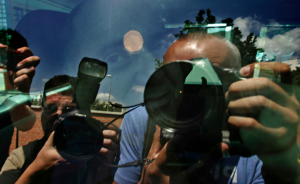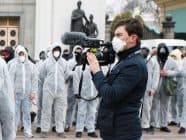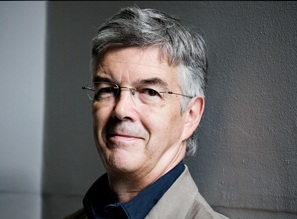 The work practices of the professional photojournalist are undergoing rapid changes in the digital era. New technologies, platforms and methods of visual storytelling are exerting a range of pressures and influences that require photojournalists to adapt and respond in different ways.
The work practices of the professional photojournalist are undergoing rapid changes in the digital era. New technologies, platforms and methods of visual storytelling are exerting a range of pressures and influences that require photojournalists to adapt and respond in different ways.
The changes provoke a number of questions critical to the future of professional photojournalism: What are the new risks being faced by photojournalists? How are the transformations in the media economy affecting photojournalists’ employment? What does this mean for image quality? How do photojournalists think about the manipulation of images or the staging of events? Given the rise of citizen journalism, digital technology and social media, will there even be professional photojournalists in the future?
The State of News Photography: The Lives and Livelihoods of Photojournalists in the Digital Age investigates the characters, working conditions, practices, technology use, and ethics of photojournalists around the world. The results indicate a high degree of risk is experienced among professional photographers with a very strong correlation to the country in which they are based.
The report is the outcome of a research project conducted by the University of Stirling, the University of Oxford’s Reuters Institute for the Study of Journalism, and the World Press Photo Foundation.
Findings are based on an online survey of professional photographers who entered the 2015 World Press Photo Contest. This is the first international examination of the lives and livelihoods of photojournalists, and the 63-question survey was completed by 1,556 photographers from more than 100 countries.
World Press Photo Foundation managing director Lars Boering said: “The World Press Photo Foundation supports professional photographers and visual journalists in their work. Collaborating on research to inform the community is one of our important functions, and we are delighted to both share and learn from these important findings. This study gives us reliable data on many of the challenges the profession faces, and this will help all of us address those challenges.”
Dr Adrian Hadland, Director of Journalism at the University of Stirling, UK, and the report’s lead researcher, commented: “Even though powerful images are at the heart of the digital revolution and the lifeblood of the news industry, photojournalists have all too often slipped between the cracks when it comes to research. As journalism scholars we knew things were changing fast for photojournalists as a result of rapid developments in technology, the restructuring of the news sector and the emergence of citizen journalists armed with smartphones. But until now, we had no way of knowing how all this was impacting on people who make their livelihood shooting pictures. Here, for the first time, is the story of how photojournalism is changing in the digital era, based on data from photojournalists in more than 100 countries. Our findings are surprising, even shocking in some respects, but they are also encouraging. This is a profession in flux and facing enormous challenges, but enjoying the freedom and creativity that is increasingly possible. We look forward to working on this research over the next three years with the World Press Photo Foundation and tracking how things change over time.”
The report comes after another recent study: Is Digitalisation Killing Photojournalism? This was based on research conducted among photojournalists working in the Czech Republic.
– Download the report at: http://reutersinstitute.politics.ox.ac.uk/publication/state-news-photography-lives-and-livelihoods-photojournalists-digital-age#sthash.v6UC5qDP.dpuf
photo credit: @Reuters Karoly Arvai, cover of RISJ report
Tags: Digital Media, digital news, Journalism, Photojournalism, Research, Reuters Institute for the Study of Journalism, university of stirling, world press photo awards















































